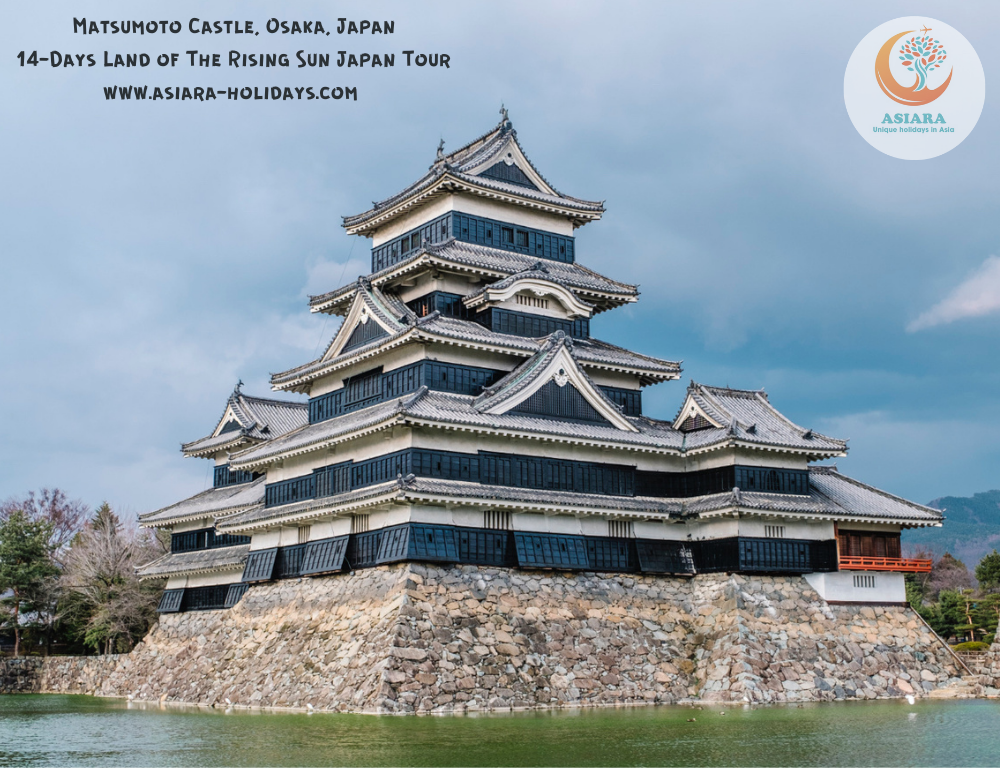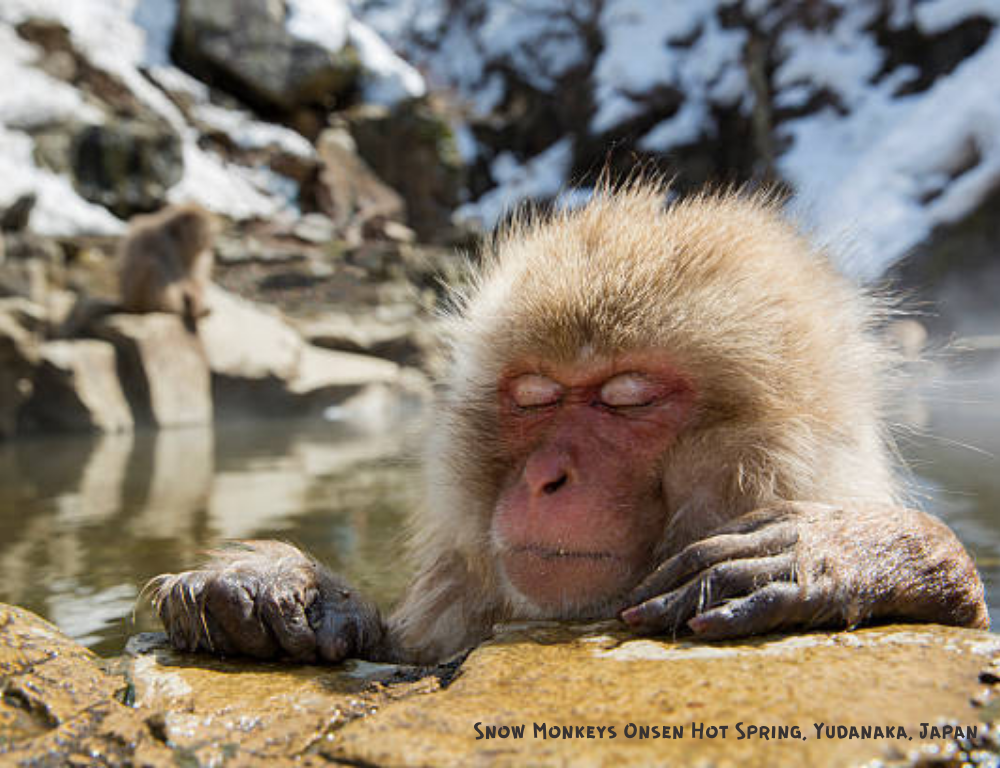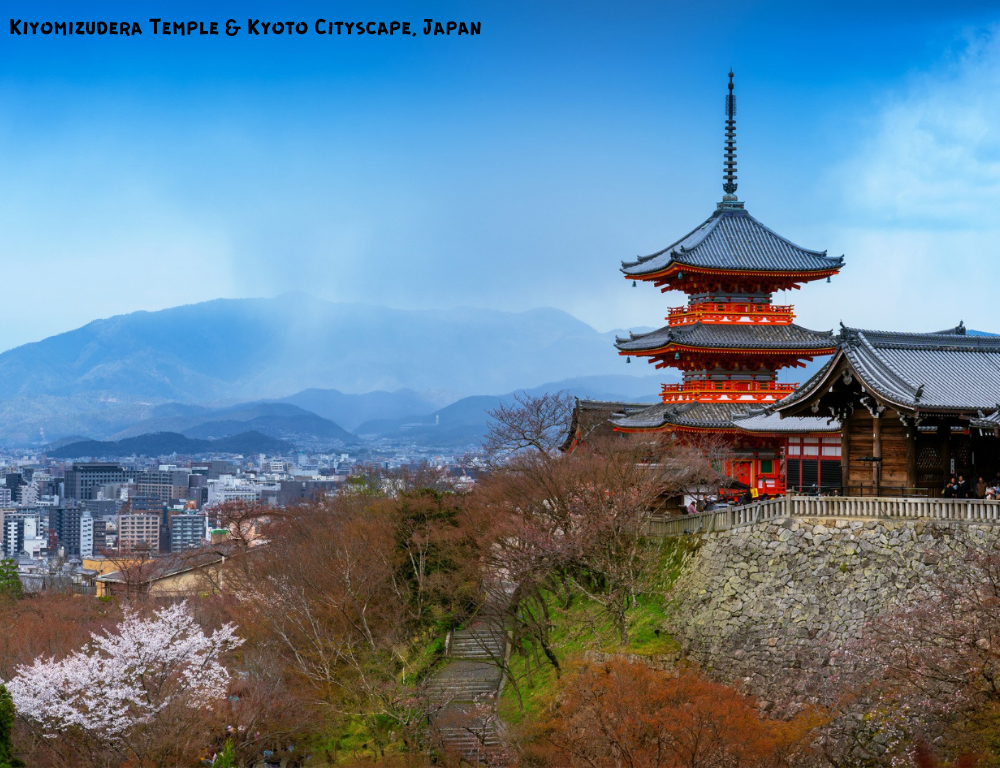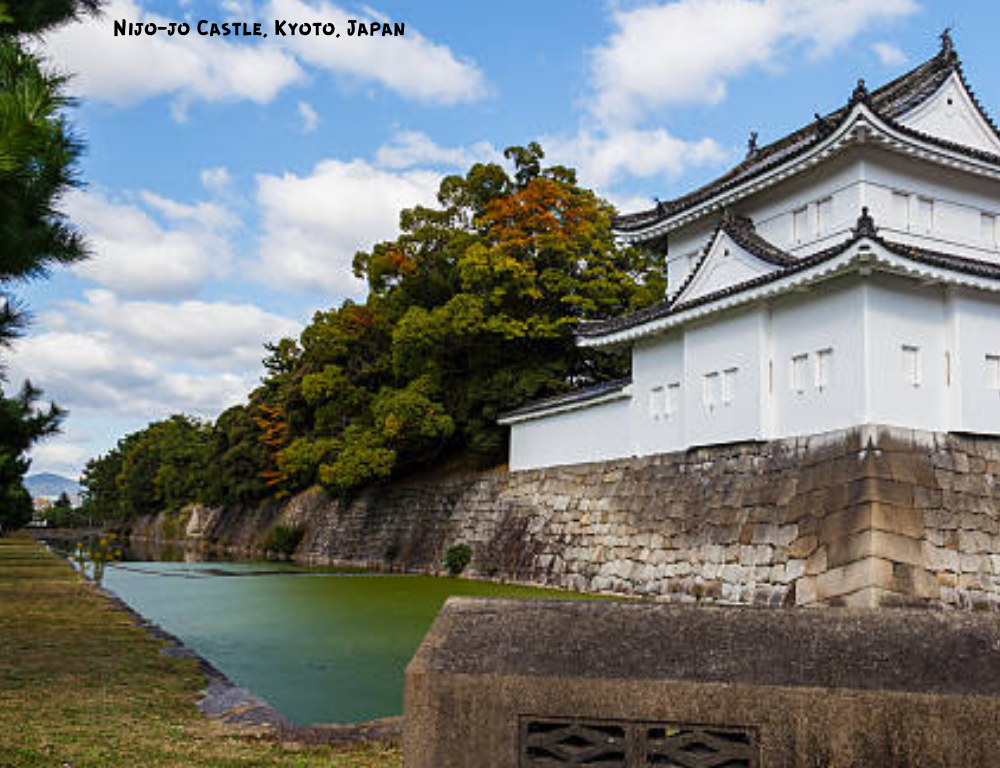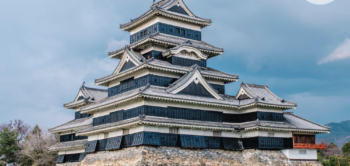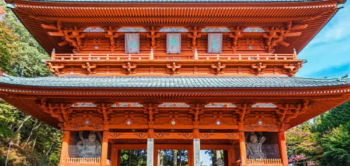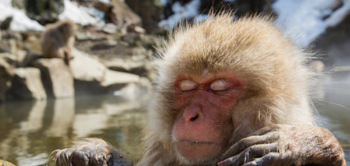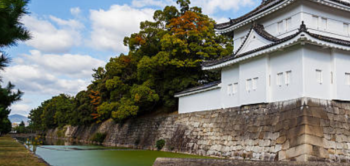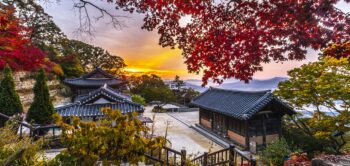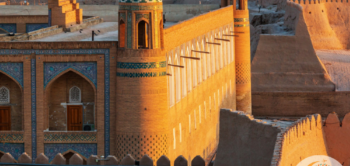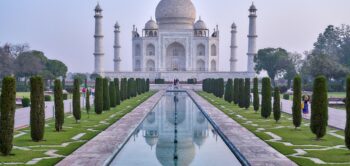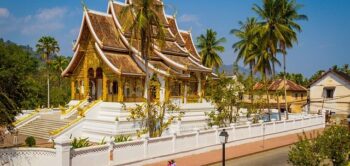Group Trips to Japan: Land of the Rising Sun 14-Day Tour
Tour Detail
Highlights of the Trip
Embark on an extraordinary 14-day journey through the heart of Japan, where tradition and modernity intertwine seamlessly. Your adventure begins in Tokyo, where you’ll be greeted with a warm welcome dinner, setting the stage for the cultural wonders that await. Explore Tokyo’s vibrant neighbourhood, from bustling markets to serene temples, on a captivating walking tour.
As your adventure continues, you’ll find yourself in the enchanting village of Obuse, followed by a visit to the Yudanaka Onsen Hot Spring Village, famous for its endearing snow monkeys. Discover the rich history of Matsumoto Castle and Narai Post Town, and wander through the timeless streets of Tsumago and Magome. Takayama beckons with its charming atmosphere and soothing hot-spring bath, while the Takayama Festival Floats Exhibition Hall and Ogimachi Village unveil the region’s cultural treasures. In Kyoto, savour a half-day walking tour then embark on a mesmerising day tour to Nara.
Your journey takes an ethereal turn as you board the Nankai Railway to Mount Koya, where you’ll experience an overnight temple stay, complete with Buddhist-vegetarian cuisine and a morning Buddhist service. The high-speed bullet train from Osaka to Tokyo leads you back to the bustling metropolis for a special farewell dinner, marking the perfect conclusion to this enriching group expedition, the best way to tour Japan. Depart with cherished memories and a profound appreciation for the many facets of Japan’s rich heritage.
Destinations and the Landmarks / Sights to Visit
Tokyo
- Hama-Rikyu Gardens: This 250,000 square meter park is a popular attraction for locals and tourists.
- Nihonbashi (the ‘Japan Bridge’): This has a rich history dating back to the 17th century when it was built as a wooden bridge over the Nihonbashi River.
- Grand Meiji Shrine: Built in 1920, the shrine was dedicated to Emperor Meiji and his wife Empress Shoken.
Obuse
- Hokusai-kan Museum: Dedicated to the life and works of renowned Japanese artist, Katsushika Hokusai.
Matsumoto (Narai)
- Castle: This castle has a rich history dating back over 400 years.
Takayama
- Yoshijima Heritage House: This historic house was built over 200 years ago, during the Edo period, and has been carefully preserved and passed down through the Yoshijima family for generations.
- Festival Floats Exhibition Hall: A vibrant and lively space dedicated to showcasing the most spectacular and elaborate floats used in festivals around the world.
Kyoto
- Sanjo-ohashi Bridge: Unlike many other bridges in Japan, it is not made of stone or wood, but rather of iron.
- Kinkaku-ji: Originally built as a retirement villa for the shogun Ashikaga Yoshimitsu in the late 14th century, Kinkaku-ji was later converted into a temple after his death in 1408.
Nara
- Todai-ji Temple: Considered to be one of the most significant and influential Buddhist temples in Japan, playing a major role in the development of Buddhism in the country.
Osaka
- Mount Koya: The mountain is considered to be a spiritual and peaceful place, with over 100 temples and monasteries scattered throughout its slopes.
Cultural Experiences & Activities of this Holiday
Yudanaka Onsen: The town is famous for its numerous hot spring resorts, traditional inns, and snow monkeys. It is an ideal destination for those seeking a peaceful and relaxing retreat away from the hustle and bustle of city life. The town’s history as a hot spring resort dates back over 1300 years. The natural hot springs here are believed to have healing properties and are said to cure various ailments.
Kiso Valley: The valley is surrounded by towering peaks, dense forests, and crystal-clear rivers, making it a paradise for outdoor enthusiasts. The area is also steeped in history, with numerous preserved towns and villages dating back to the Edo period. These towns are famous for their old-fashioned wooden buildings and traditional houses, creating a nostalgic atmosphere that transports visitors back in time.
Tsumago: This quaint post-town that has been carefully preserved as a living museum. Take a leisurely stroll through its charming streets, and indulge in the local specialty, gohei-mochi, a delectable treat made with miso, sesame, and walnuts on skewered balls of sticky rice. Don’t miss the opportunity to visit the folk museum and learn about the town’s rich cultural heritage. The trail then continues for 8 kilometres/ 5 miles, leading you through scenic forests, countryside, and traditional homes, before reaching the picturesque Magome Pass. Along the way, you’ll pass by farms, rice fields, and gardens, providing a glimpse into the local way of life.
Takayama Market: Explore this bustling market. Walking through the narrow streets of the Takayama Market, visitors are greeted with the enticing aromas of freshly cooked food and the sound of friendly vendor calls. The abundance of colourful fruits and vegetables, locally sourced meats and fish, and handmade pickles and sauces, showcase the importance of the market in providing fresh and quality ingredients to the local community.
Ogimachi Village: The village is famous for its unique architecture, which features traditional thatched-roof houses known as gassho-zukuri, or ‘praying hands’ style houses. These houses are constructed using a unique method of stacking wooden beams and using straw to create a steeply-pitched roof, allowing the snow to easily slide off in the winter.
Buddhist Service: Participate in a cultural Buddhist service at a local temple. Observe local rituals and gain a deeper understanding of local culture.
Local Cuisine and Traditional Dishes to try while in Japan
During this tour, numerous opportunities will arise for you to savour the authentic local cuisine, whether from the menus of included meals or from your own culinary exploration during your free time in the itinerary. Indulge in traditional dishes that showcase the rich flavours of the region, including aisen-don, a bowl of rice topped with an array of fresh seafood such as salmon, crab, and sea urchin. Another popular dish in Tokyo is monjayaki, a popular street food in Tokyo that combines the traditional Japanese pancake batter with various fillings such as seafood, meat, and vegetables.
Accommodation of this Tour
Accommodation includes Western-style hotels, Ryokans (traditional Japanese inns), a Minshuku (family-run guesthouse), and a Shukubo (temple lodging).
Japan small group tours offer a magical way to travel through this beautiful country. To discover more of our group trips to Japan, browse our website or contact us on +01473356000 or enquiry@asiara-holidays.com
| Price | "£5187" guide price per person. Group size on tour may vary |
|---|
Itinerary
Day 1: Arrival Tokyo and welcome dinner
Gather at the tour hotel in the heart of Tokyo in the evening to meet your guide and the other group participants. Afterwards, you will be able to enjoy a Welcome Dinner at a nearby eatery.
✓ Dinner
Day 2: Tokyo Walking Tour
On our inaugural day in Japan, we embark on a walking tour of Tokyo. Our first stop is the picturesque Hama-Rikyu gardens, located close to the mouth of the Sumida-gawa River, providing a striking contrast to the modern Shiodome business district. Afterwards, we head to Nihonbashi (the ‘Japan Bridge’), the zero marker point for all Japan’s main roads since the Edo era. Then, we proceed to the chic Ginza shopping district, followed by a visit to the Grand Meiji Shrine close to Harajuku, renowned for its modern fashion and architecture.
✓ Breakfast
Day 3: Obuse and Yudanaka Onsen Hot Spring village
This morning, we are heading to Obuse, which is in Nagano Prefecture, north-west of Tokyo. It is a charming town where the renowned artist Hokusai spent his final years. We will be visiting the Hokusai-kan museum, which showcases many of his works. Afterwards, we will make a short trip to Yudanaka Onsen, a hot spring village that is popular for its snow monkeys. These Japanese macaques usually come to soak in the outdoor hot spring bath during the winter, but now they visit all year round.
✓ Breakfast and Dinner
Day 4: Matsumoto Castle and Narai Post Town
First, we will venture to Matsumoto to witness the magnificent 16th century castle. Afterwards, we will head to the Kiso Valley and the quaint town of Narai, a remnant of the historic Nakasendo way between Kyoto and Tokyo. Here, you will find many preserved houses and former inns that remain.
✓ Breakfast and Dinner
Day 5: Narai, Tsumago, and Magome
After breakfast, you’ll have time to explore the historic town of Narai, known for its lacquerware and woodcrafts. Then, take a short journey by train or bus to reach Tsumago, a post-town along the former Nakasendo trail that has been preserved as a living museum. Stroll the streets, try some gohei-mochi (a sweet paste of miso, sesame, and walnuts on skewered balls of pounded sticky rice) and visit the folk museum. From there, the trail winds for 8 kilometres/ 5 miles over the Magome Pass to Magome, passing through forests, countryside, farms, rice fields, traditional homes, and gardens. You can take the local bus to reach your destination or choose to walk the entire trail. Upon arrival, you’ll check into a traditional Minshuku inn, a family-run guesthouse.
✓ Breakfast and Dinner
Day 6: Travel to Takayama and hot-spring bath
After having breakfast, we take a leisurely walk through Magome and then make our way to Takayama. This area is renowned for its traditional architecture, as well as its crafts, such as yew-wood carving, Shunkei lacquerware, pottery, and furniture. After checking into the inn, we can take some time to explore the nearby areas and then indulge in a hot-spring bath before dinner. In the evening, we make sure to taste the delectable Hida beef and perhaps sample some locally brewed saké.
✓ Breakfast and Dinner
Day 7: Full day exploring Takayama
Today, we’re spending the day exploring the charming city of Takayama! We’ll start our journey by visiting the morning market, which offers an array of vegetables, crafts, pickles, and souvenirs. We’ll then take a look at the exquisite Yoshijima Heritage House, with its beautiful wooden structure and intricate interior design. Following that, we’ll meander through the San-machi area, home to many traditional merchant houses, some of which are open as museums. After lunch, you’ll have free time to explore and find any special treasures to take home!
✓ Breakfast
Day 8: Takayama Festival Floats and Ogimachi village
Start your day off by exploring the Takayama Festival Floats Exhibition Hall, one of the three most beautiful festivals of Japan. Here you will find huge, elaborate floats which are sure to amaze. Then, head to Ogimachi village in the Shirakawa-go area north-west of Takayama. This village is home to many gassho-zukuri houses which were recognized as a UNESCO World Heritage site in 1995. The term gassho-zukuri refers to the shape of the steep thatched roofs, designed to protect against heavy snowfall.
✓ Breakfast and Dinner.
Day 9: Travel to Kyoto
Today, we are departing from the mountains and heading to Kanazawa by bus, before taking a train to Kyoto and our hotel in the city centre. Later, we will be strolling through Gion, renowned for its exclusive ryotei restaurants and geiko or maiko. Additionally, we plan to visit Sanjo-ohashi Bridge, the beginning of the Nakasendo Trail.
✓ Breakfast
Day 10: Half-day Kyoto walking tour
This morning, we are embarking on a half-day walking tour. Our first stop is Kinkaku-ji, the Golden Pavilion, which was built by the Ashikaga Shogun in the 14th century. Afterward, we will be heading to Ryoan-ji, home to a renowned rock garden with fifteen moss-covered boulders. In the afternoon, you will have free time to explore the area further or go shopping for souvenirs.
✓ Breakfast
Day 11: Day tour of Nara
Heading south of Kyoto by train, we will find ourselves in the ancient city of Nara. Our first stop will be Todai-ji temple, home to a bronze statue of Buddha and said to be the largest wooden structure in the world. Alternatively, we could take the back road from Todai-ji to Kasuga Taisha Shrine. After that, we could explore the old merchant district of Nara-machi with its narrow streets, shops, cafes, and restaurants. We will then return to Kyoto in the evening.
✓ Breakfast
Day 12: Nankai Railway to Mount Koya and temple stay
We start our journey by taking a local train to Osaka, and then continue on the breathtaking Nankai Railway Line to Mount Koya. This bowl-shaped valley is home to an abundance of cedars and is situated on the Kii Peninsula. Mount Koya has been a place of worship and ritual since the 9th century and now possesses over 100 monasteries, some of which offer Shukubo (Pilgrim’s lodging). During our stay we will be accommodated in one of the exquisite temples and enjoy a delicious shojin-ryori (Buddhist vegetarian cuisine). We will also take a walk through the colossal Okuno-in cemetery, containing thousands of graves and memorials to feudal lords and other great figures of history.
✓ Breakfast and Dinner
Day 13: Buddhist service, Bullet Train, and Farewell Dinner
This morning is your chance to rise early (6am!) and participate in a Buddhist service at the temple. After breakfast, we will make our way back to Tokyo, taking the shinkansen Bullet Train from Osaka. To cap off the day, there will be a Farewell Dinner in the evening in Tokyo.
✓ Breakfast and Dinner
Day 14: End of tour and departure
Today marks the end of the tour, and your guide is available to help you with airport travel if you are flying home, or with any other travel plans in Japan if you are continuing your visit. Breakfast will be the last activity before saying goodbye.
✓ Breakfast
Japan small group tours offer a magical way to travel through this spectacular part of the world. To discover more of our group trips to Japan, browse our website or contact us on +01473356000 or enquiry@asiara-holidays.com
Price
Guide price per person:
£4188
Group size on tour may vary and price may vary depending on number of travellers.
Tour Map
Tour Summary
Day 1: Arrive in Tokyo and Welcome Dinner.
Day 2: Tokyo Walking Tour – Hama-Rikyu Gardens, Nihonbashi, Ginza, and Meiji Shrine.
Day 3: Obuse and Yudanaka Onsen Hot Spring village – Hokusai-kan Museum and Snow Monkeys.
Day 4: Matsumoto Castle and Narai Post Town.
Day 5: Narai, Tsumago, and Magome – Historic Towns and Nakasendo Trail.
Day 6: Travel to Takayama and hot-spring bath – Magome exploration and Takayama cuisine.
Day 7: Full day exploring Takayama – Morning Market, Yoshijima Heritage House, and San-machi.
Day 8: Takayama Festival Floats and Ogimachi village.
Day 9: Travel to Kyoto – Gion, Sanjo-ohashi Bridge, and Nakasendo Trail.
Day 10: Half-day Kyoto walking tour – Kinkaku-ji and Ryoan-ji.
Day 11: Day tour of Nara – Todai-ji Temple, Kasuga Taisha Shrine, and Nara-machi.
Day 12: Nankai Railway to Mount Koya and temple stay – Shukubo stay and Okuno-in cemetery.
Day 13: Buddhist service, Bullet Train, and Farewell Dinner – Shinkansen ride and Tokyo farewell.
Day 14: End of tour and departure.
Include
Accommodation
Entrance Fees
Free Time
Guided Sightseeing
Iconic Landmarks and Attractions
Local Experiences
Meals
Meals as included in itinerary
Support Services
Tour Guide
Transportation
Unique Experiences
Exclude
Additional Accommodation
Airport Transfers
International Flights
Meals
Meals not mentioned in itinerary
Optional Activities
Personal Expenses
Tips and Gratuities
Travel Insurance
Visa
Visa Fees
BOOK ONLINE
Note
Our Group Tours operate with a maximum group size of 16 people, you can enjoy plenty of time to interact with your tour guide, learning about the culture and heritage of each destination you visit. To reserve your places, start by choosing your desired departure date and complete your booking by following the instructions. Upon receipt of your booking, our team will check availability and confirm your booking. If you change your mind, you can cancel your booking within 48 hours of our confirmation with no penalty. Our free cancellation/cooling period ensures that you can cancel your tour with ease.
Gửi yêu cầu thành công
Mã đơn hàng: #
Chúng tôi sẽ liên hệ lại ngay sau ít phút

